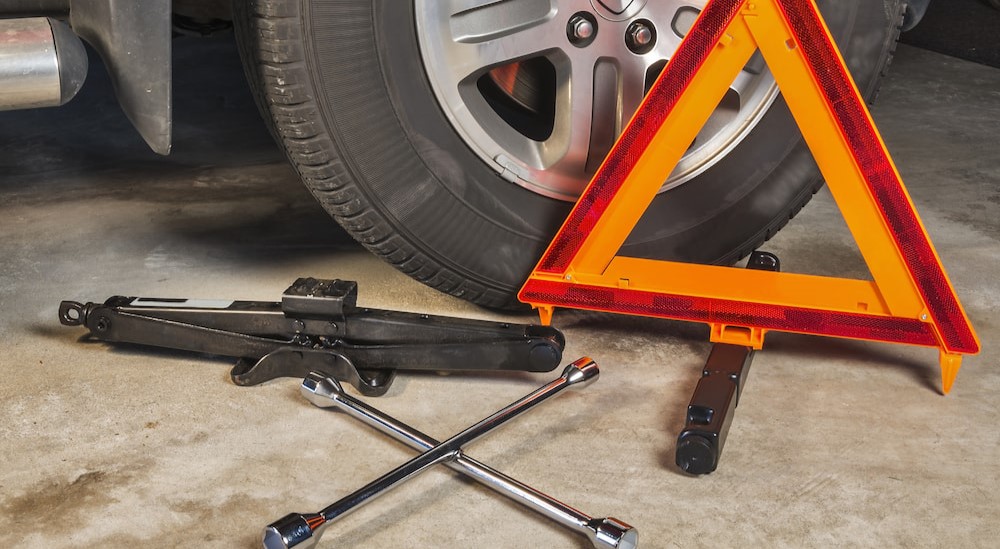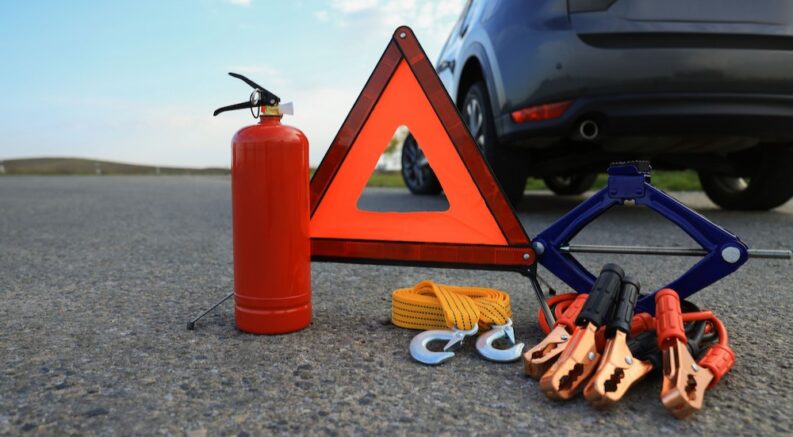Almost every motorist has experienced the dread of being stuck on the side of the road—or worse, in the middle of it—because something went wrong. Agero estimates there are 69 million vehicle breakdowns in the US every year, and the National Safety Council adds that more than 13 million vehicle crashes occur; this means there’s more than a 1 in 3 chance of your machine being disabled this year.
As a driver, you should know which life-saving (but affordable) tools to keep in your car for when (not “if”) a problem occurs. Roadside assistance programs are increasingly common, with many manufacturers now offering complimentary services and plans available through insurance companies and clubs; still, it can take up to an hour for emergency workers and technicians just to arrive on the scene. That’s time you may not be able to afford. Furthermore, having the correct tools can help keep you from getting stranded in the first place.
Having some basic tools and equipment on hand can get you back on the road faster and safer. Here are nine to keep in your car, for addressing everything from flat tires to sudden snowstorms…
1) Jumper Cables or Jump Starter Pack
One of the most common reasons for drivers getting grounded is a dead battery, whether due to lights being left on, the battery weakening with age, or other issues. Having a way to start the car can save you hours of despair.
Jumper cables are the most affordable option, with a good set starting around $30. However, this requires another car—whether that of a friend, family member, or good Samaritan. For about $100, you can buy a battery-powered jump starter pack that will get you on the road again. Just remember to check periodically that it’s still charged.
2) Flashlight and Batteries
If you pull over because of an engine or suspension issue, you may need some added visibility to diagnose the problem. You also don’t want to run the battery dry using the vehicle’s lights to find things.
For anywhere from $10-50, you can get an LED flashlight that helps you see into the engine bay or underneath the seat. Keep a spare set of batteries on hand, too; even if your batteries are rechargeable, you may not have a way to charge them when you’re on the road.
3) Flat Tire Sealer and Inflator
According to AAA, 220 million car tires go flat in the US every year. Unfortunately, a spare tire is no longer a given for new vehicles, and used vehicles don’t always include them, either.
Flat tire sealants, which go by names such as Fix-a-Flat and Slime, will temporarily patch tires for less than $10. They come in an aerosol can that you attach to the valve stem and spray into the tire. A tire sealer isn’t meant to last thousands of miles (just for a day or two until you can get the tire properly fixed or replaced), but it will still save you a lot of time and money compared to a tow.

4) Jack and Lug Wrench
Even if your car has a spare tire, you still need a way to put it on. If these tools didn’t come with the car, you’ll want to keep a jack and a lug nut wrench on hand in case you’re ever required to change a tire.
Bottle jacks are the most efficient design, and for as little as $40-50, you can find one capable of lifting a full-size SUV. As for lug wrenches, a standard four-way cross wrench starts around $10-20, and you can get folding models that save space. Just make sure it has a socket head or adapter that is the same size as your lug nuts!
5) Air Pressure Gauge
Not only are flat tires a concern, but so are improperly inflated tires. The Department of Transportation estimates that 28% of light-duty vehicles have at least one tire low on air pressure. When tires are underinflated or overinflated, it can cause poor handling, excessive tire wear, longer stopping distances, and other dangerous problems.
Though TPMS sensors are increasingly common, you should keep a tire pressure gauge in your glove box. A basic pencil gauge can cost less than $10, and by checking your tire PSI once a month and adjusting it at the nearest gas station to stay within the recommended range, you can avert potential disaster. The recommended PSI will be in the owner’s manual.
6) Scraper and Brush
Anyone who lives in a colder area (or travels to them) has experienced walking out of their home, their workplace, or a store to see their car covered in snow and ice. Keeping a large scraper and brush allows you to clean off the windshield, windows, headlights, hood, and roof so you can drive with full visibility, lowering the chances of a crash.
You won’t have to waste gas or battery power running the engine to clear things up, either. A combination scraper/brush starts at around $30-40, and you can buy the tools separately if you only need one or the other. In heavy-snow areas, you may also want to keep a shovel for digging your car out after big storms.
7) Warning Triangles or Flares
When you’re already having problems with your vehicle, you don’t want them to get a lot worse. The Insurance Institute for Highway Safety (IIHS) reports that, every year, more than 500 people are killed and 14,000 people are injured in crashes that happen because motorists can’t see a disabled vehicle on the road.
A set of high-visibility warning triangles or light-up flares is a great failsafe if your emergency flashers aren’t working, and you might use both at night for maximum effect. A pack of reflective triangles costs around $40, while flares cost around $20-30.

8) Duct Tape
A high school friend of mine once called duct tape the answer to all the world’s problems. While it may not be that versatile, it certainly comes in handy when you need to do short-term repairs on a vehicle.
With duct tape, you can temporarily cover exposed wires, seal a hose or line, reattach mirrors, cover a windshield crack, and much more. Again, it’s a short-term fix, but it will get you home or to a service shop. You can get a three-pack of industrial-grade duct tape for $30 or less in some places, giving you plenty of tape that will hold against moisture and dirt.
9) Power Bank
While not technically an auto tool, a power bank is still essential for motorists. The last thing you need is to not be able to call for help because you forgot to charge your phone before leaving, or because you’re in a lower-service area that chews the battery up fast.
A power bank and cable will keep your cell phone charged up without needing to use the vehicle battery. Good power banks can be anywhere from $20-50 depending on the size; you should get one large enough to fully charge your phone at least once.
Stay Safe on the Road
It’s almost inevitable that you will eventually have car trouble. By being prepared, though, you can address the issue yourself or quickly get the help you need. Always make room in your vehicle for the right automotive travel tools and accessories, and remember to get a nice protective storage bag to keep track of everything! With well-chosen tools, you can prevent a minor misfortune from spiraling into something that ruins your day—or worse.

